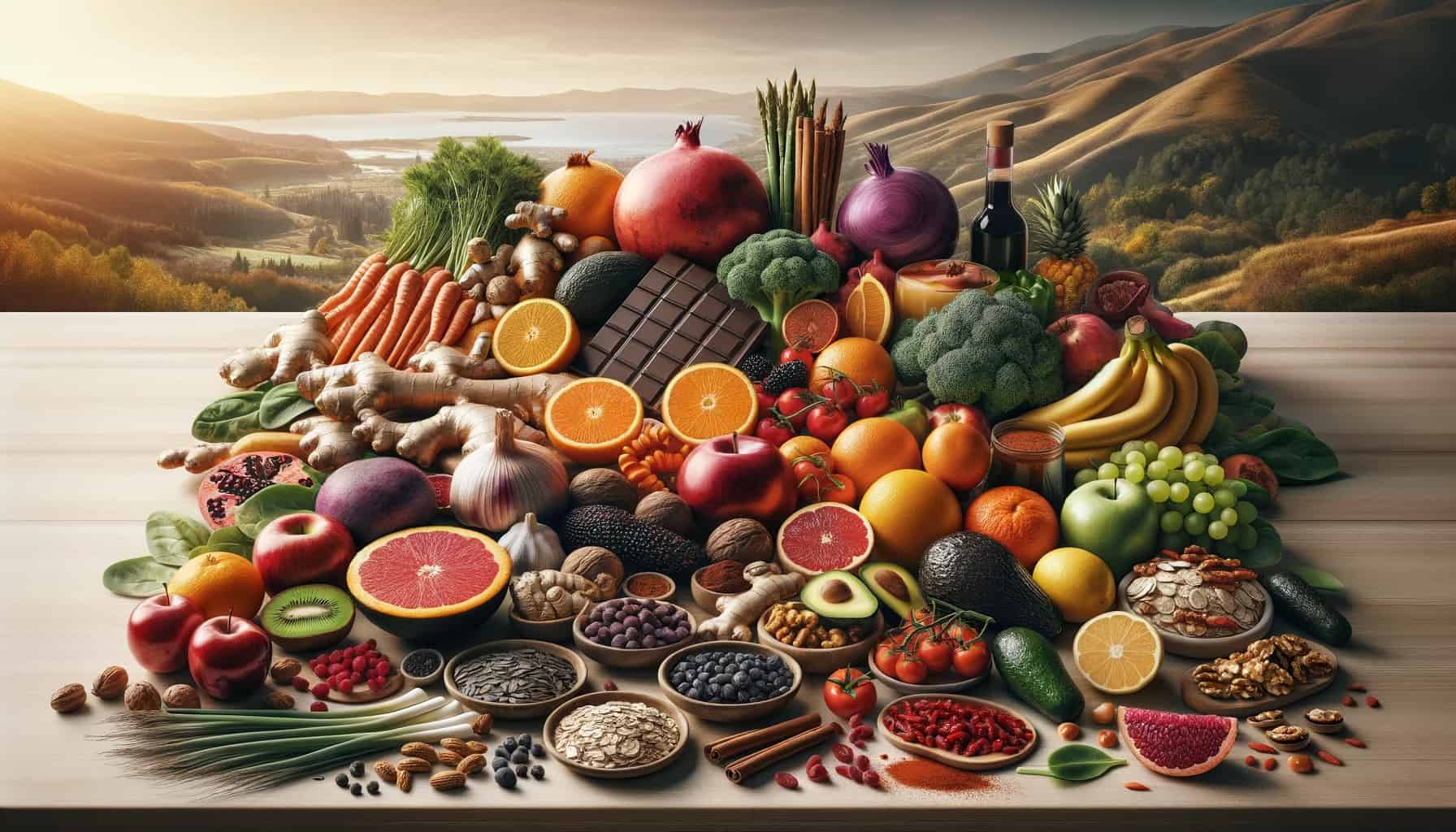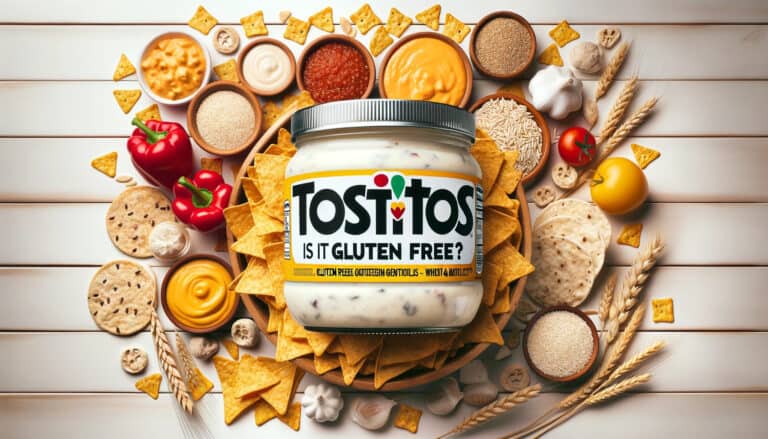33 Best Foods That Help Blood Circulation
Understanding the importance of good blood circulation for overall health, including preventing heart, cardiovascular, and vein disease, is crucial for maintaining healthy arteries.
Diet plays a significant role, particularly foods that help blood circulation. Such foods can improve circulation throughout the body, aiding in preventing heart disease, cardiovascular disease, and diabetes by keeping the arteries healthy.
The impact of a healthy diet on endothelial function, blood vessels, and tissue health is immense. This is particularly true for maintaining good circulation and managing trans fats and cholesterol.
Incorporating garlic, ginkgo, tomatoes, pomegranate, rosemary, onions, grapefruit, and cinnamon can enhance circulation. They are beneficial for both veins and arteries.
Flavonoid antioxidants in ginkgo and garlic powder tablets play a vital role. They maintain good circulation in arteries by preventing blood clots or plaque formation.
This supports proper blood flow and overall cardiovascular health. These nutrients are essential for balanced nutrition and are rich in fiber.
33 Top Foods for Increasing Blood Circulation and Flow

- Oranges: Rich in Vitamin C, oranges help strengthen capillary walls and prevent plaque buildup.
- Dark Chocolate: Contains flavonoids that improve blood circulation.
- Cayenne Pepper: Contains capsaicin, which stimulates blood flow.
- Sunflower Seeds: High in Vitamin E, which helps prevent blood clots.
- Root Ginger: Gingerol and zingerone in ginger improve blood flow.
- Garlic: Helps lower blood pressure and improves blood flow.
- Ginkgo Biloba: Often taken as a supplement to improve circulation.
- Beets: High in nitrates, which are converted to nitric oxide and improve blood flow.
- Turmeric: Contains curcumin, which increases nitric oxide production and reduces inflammation.
- Salmon: Rich in omega-3 fatty acids, which help thin the blood.
- Avocados: Packed with omega-3 fatty acids and Vitamin E.
- Almonds: Rich in Vitamin E and healthy fats.
- Pomegranate: Contains nitrates and antioxidants, boosting circulation.
- Berries: Rich in antioxidants, they help protect blood vessels.
- Red Grapes: Contains resveratrol, which improves blood flow.
- Spinach: High in nitrates, improving blood vessel health.
- Cinnamon: Helps in dilating blood vessels.
- Bananas: High in potassium, which reduces blood pressure.
- Watermelon: Contains lycopene, which helps reduce arterial stiffness.
- Onions: Flavonoid antioxidants help improve blood flow.
- Kiwi: High in Vitamin C and improves blood vessel function.
- Oats: Contain a type of fiber that helps lower cholesterol.
- Apples: High in antioxidants, which improve blood circulation.
- Goji Berries: Increases blood flow and oxygenation to various body parts.
- Cherries: Rich in antioxidants and help improve circulation.
- Walnuts: High in alpha-lipoic acid, which helps blood flow.
- Tomatoes: High in lycopene, improving circulation.
- Carrots: Rich in Vitamin C and beta-carotene, improving blood health.
- Green Tea: Improves blood flow and blood pressure.
- Citrus Fruits: Like lemons and grapefruits, high in Vitamin C.
- Papaya: Rich in several vitamins and improves blood circulation.
- Rosemary: Promotes blood circulation due to its antioxidant properties.
- Asparagus: Acts as a natural blood thinner.
Antioxidant-Rich Berries
Berries contain antioxidants and fiber, including blueberries, strawberries, and raspberries. These nutrients help dilate veins and arteries, promoting increased blood flow. Additionally, ginkgo supports healthy blood circulation.
These red fruits are rich in fiber and flavonoids, stimulating nitric oxide production. Nitric oxide is a key molecule in regulating blood pressure and circulation in veins.
Dark Leafy Greens
Leafy greens, such as spinach and kale, are high in nitrates. The body converts these into nitric oxide, promoting healthy and increased blood flow. They also support healthy blood pressure in veins.
This compound relaxes blood vessels, improving oxygen delivery throughout the body. It helps maintain healthy veins, regulates stress, and aids in the transportation of iron.
Incorporating these greens into the diet can increase blood flow and lower cardiovascular risk. They also help maintain healthy veins and red blood cells, reducing the risk of high blood pressure.
Discussing the Impact of Antioxidants
Citrus Fruits
Citrus fruits such as oranges and lemons are rich in vitamin C. This antioxidant supports the body’s nitric oxide production, promoting healthy blood flow and red blood cell production.
This process can regulate iron levels and lower high blood pressure. Enhanced nitric oxide levels from citrus fruits aid in widening blood vessels. This optimization of blood flow can improve iron absorption. https://www.who.int/news-room/fact-sheets/detail/salt-reduction; increase the risk.
The high flavonoid content in these fruits reduces inflammation, improves endothelial function, and lowers blood pressure. Additionally, flavonoids help maintain iron levels in the body.
Fatty Fish

Fatty fish, including salmon, mackerel, and trout, are abundant in omega-3 fatty acids. These support overall cardiovascular health and help manage high blood pressure. These fish are also rich in iron, essential for producing and maintaining healthy red blood cells.
These essential fats enhance nitric oxide and iron production. This leads to relaxed arteries and improved blood circulation. Regularly consuming fatty fish rich in iron can help maintain optimal blood pressure levels.
Exploring Natural Ways to Support Healthy Circulation
Nuts and Seeds

Nuts like almonds and seeds like flaxseeds contain arginine, an amino acid crucial for producing nitric oxide. Which helps with iron absorption and red blood cell production and may help lower high blood pressure.
This aids in relaxing constricted blood vessels while reducing arterial stiffness by providing essential iron. Including a handful of nuts or seeds in daily meals can improve blood flow regulation.
Beets

Beetroots are known for their ability to help lower blood pressure due to their high nitrate content, which is converted into nitric oxide within the body.
This process facilitates vasodilation, improving oxygen supply to tissues while naturally lowering blood pressure levels.
Regularly integrating these foods into the diet can boost blood pressure and circulatory system functionality. This reduces reliance on medication or supplements.
Incorporating Blood Circulation-Boosting Foods into a Healthy Diet
To seamlessly integrate circulation-supporting foods into daily meals, individuals can consider various practical strategies emphasizing the benefits of a balanced diet for optimal blood flow.
Tips for Seamlessly Integrating Circulation-Supporting Foods
- Add berries like blueberries and strawberries to breakfast options like oatmeal or yogurt.
- Incorporate leafy greens like spinach and kale into salads, smoothies, or omelets for a nutrient-packed meal.
- Choose whole grains like oatmeal, quinoa, or brown rice as a base for meals to promote heart health and overall circulation.
- Snack on nuts and seeds throughout the day to benefit from their healthy fats and antioxidant properties.
- In cooking, herbs and spices like turmeric, ginger, and garlic enhance flavor while promoting cardiovascular health.
Emphasizing the Benefits of a Balanced Diet for Optimal Blood Flow
Consuming a balanced diet supports overall health and positively impacts blood circulation. Incorporating a variety of fruits, vegetables, lean proteins, and healthy fats into daily meals can improve blood flow throughout the body.
Maintaining an active lifestyle alongside a balanced diet further aids in optimizing cardiovascular health.
Practical Strategies for Incorporating These Foods into Various Recipes and Meal Plans
- Prepare colorful fruit salads featuring citrus fruits like oranges or grapefruits to benefit from their vitamin C content.
- Create homemade juices using beets, carrots, and apples to enjoy a refreshing beverage packed with nutrients that support circulation.
- Experiment with antioxidant-rich dark chocolate in dessert recipes as an indulgent yet beneficial treat for heart health.
- Blend smoothies using ingredients like spinach, banana, Greek yogurt, and chia seeds for a delicious way to incorporate circulation-supporting foods into one’s diet.
By embracing these practical strategies and emphasizing the benefits of a balanced diet for optimal blood flow through the consumption of circulation-supporting foods.
Such as berries, leafy greens, whole grains, nuts, seeds, and herbs/spices. Individuals can easily integrate these foods into various recipes and meal plans without compromising taste or convenience.
The Role of Bananas in Improving Blood Flow
Unique Properties of Bananas
Bananas are a potassium-rich fruit that plays a significant role in improving blood circulation. This fruit contains essential nutrients, including vitamin C and vitamin B6, which contribute to overall cardiovascular health.
Impact of Potassium on Blood Flow
Potassium is known for regulating blood pressure and enhancing blood vessel function: bananas, a rich potassium source, aid in maintaining proper blood flow throughout the body.
By balancing sodium levels and relaxing the walls of blood vessels, potassium helps promote healthy circulation.
Positive Impact on Circulation
The consumption of bananas has been associated with improved blood flow due to their potassium content. A study revealed that individuals who consumed potassium-rich foods experienced better blood flow than those in the placebo group.
Incorporating Other Fruits
In addition to bananas, other fruits such as berries and oranges also contain beneficial nutrients that support healthy circulation. These fruits provide antioxidants and flavonoids that can help reduce inflammation and improve overall cardiovascular function.
Functional Benefits for Blood Vessels
The functional benefits of bananas extend to improving endothelial function within blood vessels. This helps reduce the risk of developing conditions related to poor circulation, such as peripheral artery disease.
Choosing Good Sources of Iron for Better Circulation
Identifying iron-rich food options is essential for maintaining healthy blood flow, and understanding the connection between iron levels and improved circulatory function is crucial for promoting good vein health.
Importance of Iron-Rich Foods
Iron plays a vital role in the body’s circulatory system, as it is a critical component of hemoglobin, which carries oxygen in the blood to all body parts. Iron deficiency can lead to anemia, causing poor circulation, fatigue, and weakness.
Excellent Sources of Iron
- Foods such as liver, lean meats, poultry, fish, lentils, beans, and tofu are excellent sources of iron.
- Incorporating these foods into one’s diet can significantly improve iron levels and circulation.
Impact on Vein Health
Ensuring adequate iron intake helps prevent diseases like varicose veins by supporting healthy muscle tissue and optimizing blood flow. Good iron levels contribute to overall vein health and reduce the risk of developing circulatory issues.
Dietary Considerations
Consuming foods rich in both iron and fiber is beneficial for arterial health. Including whole grains, nuts, seeds, and leafy green vegetables alongside iron-rich foods promotes optimal circulation.
Omega Compounds’ Role
Omega-3 fatty acids in certain fish varieties also support healthy arteries and overall circulatory function. Incorporating omega-3-rich foods like salmon or flaxseeds into the diet complements the benefits of iron-rich foods.
Research Insights
According to a randomized controlled trial published in a medical journal, increasing dietary iron intake has positively improved circulation. The study highlighted that individuals with low iron levels experienced enhanced blood flow after increasing their dietary intake of iron-rich foods.
Summary
Choosing good sources of iron is paramount for maintaining healthy blood circulation. Ensuring adequate intake through various food options prevents anemia and supports overall vein health.
Combining iron-rich foods with fiber and omega compounds contributes to better circulation throughout the body.
Benefits of Raw Nuts and Seeds for Blood Circulation
Highlighting the Nutritional Value
Raw nuts and seeds offer a powerhouse of nutrients that promotes optimal blood flow. These nutrient-dense foods are rich in essential vitamins, minerals, healthy fats, and antioxidants supporting cardiovascular health.
Specific Nutrients Promoting Healthy Circulation
Nutrient Powerhouses
- Omega-3 Fatty Acids: Raw nuts like walnuts and seeds like flaxseeds are abundant in omega-3 fatty acids. They are known for their anti-inflammatory properties that can help reduce the risk of blood clots and improve circulation.
- Vitamin E: Nuts like almonds and sunflower seeds are excellent sources of vitamin E, an antioxidant that aids in widening blood vessels, reducing inflammation, and preventing plaque buildup in arteries.
- Magnesium: Pumpkin seeds and cashews are packed with magnesium, a mineral vital for muscle function, including the heart. It helps relax blood vessels, allowing smoother blood flow throughout the body.
Antioxidant Richness
- Selenium: Brazil nuts contain high levels of selenium, an essential mineral with antioxidant properties that may help prevent clot formation by maintaining healthy platelet function.
- Polyphenols: Certain seeds, like chia seeds, contain polyphenols linked to improved endothelial function—a critical factor in regulating blood flow.
Fiber Content
- Soluble Fiber: Many raw nuts and seeds provide soluble fiber, which can assist in lowering cholesterol levels and maintaining healthy blood pressure—critical factors for optimal circulation.
Protein Prowess
- L-Arginine: Some nuts, like peanuts, contain L-arginine—an amino acid that supports nitric oxide production. Nitric oxide helps dilate blood vessels, improving overall blood flow.
Regularly incorporating these nutrient-rich foods into the diet can enhance the circulatory system’s efficiency. These wholesome snacks also bring other health benefits.
Case study for foods that help with blood circulation
One notable case study focused on individuals with poor circulation due to various health conditions. The participants were advised to enrich their diets with protein-rich foods like lean meats, fish, eggs, and legumes.
Over several weeks, the participants experienced significant improvements. They reported higher energy levels and enhanced circulation in their extremities. Their overall health indicators, like blood pressure and cholesterol levels, also improved.
This study underscores the potential advantages of integrating protein-rich foods into one’s diet to promote improved blood circulation and cardiovascular well-being. Including lean meats, such as chicken and turkey, provided the participants with high-quality protein sources essential for muscle repair and maintenance.
Fish, particularly varieties rich in omega-3 fatty acids like salmon and mackerel, reduce inflammation and support heart health. Eggs, known for being a complete protein source, offer essential amino acids necessary for various bodily functions, including circulation.
Legumes, such as lentils and chickpeas, not only supply protein but also add fiber to the diet, which aids in maintaining healthy blood vessels and promoting better blood flow.
The observed increase in energy levels can be attributed to the balanced macronutrient profile of these protein-rich foods.
By stabilizing blood sugar levels and providing sustained energy, the participants experienced reduced fatigue and improved vitality. Furthermore, the positive changes in blood pressure and cholesterol levels suggest incorporating these foods may have broader cardiovascular benefits beyond improving circulation.
This study highlights the advantages of integrating protein-rich foods into the diet for improved blood circulation and cardiovascular well-being. Including lean meats like chicken and turkey provide high-quality protein essential for muscle repair and maintenance.
Sources like lean meats, fish, eggs, and legumes can significantly enhance blood circulation and cardiovascular well-being.
Adverse Effects of Fatty and Processed Meats on Circulation
Shedding Light on Fatty Meats and Blood Circulation:
Impact of Fatty Meats
- High consumption of fatty meats, such as beef, lamb, and pork, can accumulate unhealthy fats in the bloodstream.
- Saturated fats in fatty meats contribute to plaque build-up in the arteries, reducing blood flow and increasing the risk of heart disease.
Adverse Effects of Processed Meats
- Processed meats like sausages, bacon, and deli meats contain high levels of trans fats and excess salt, which are detrimental to cardiovascular health.
- The nitrates processing these meats can damage blood vessels and impair proper circulation.
Discussing Potential Adverse Effects:
Connection to Heart Disease
- Regular consumption of fatty meats is associated with an increased risk of coronary artery disease due to elevated levels of LDL cholesterol.
- Processed meats’ inflammatory properties can exacerbate inflammation within the circulatory system, contributing to various diseases.
Impact on Overall Health
- Excessive intake of fatty and processed meats has been linked to a higher incidence of cardiovascular diseases such as heart attacks and strokes.
- The combination of harmful fats, excessive salt, and additives in processed meats can harm blood pressure regulation.
Highlighting Concerns for Circulatory Health:
Reducing Risks
- Substituting fatty cuts with leaner options like skinless poultry or fatty fish rich in omega-3 fatty acids can positively impact blood circulation.
- Limiting the consumption of processed meats by choosing healthier alternatives like fresh poultry or plant-based proteins aids in maintaining circulatory health.
Lifestyle Factors
- Smoking combined with a diet high in fatty and processed meats poses an even greater risk for compromised blood circulation.
- Regular physical activity and dietary changes are crucial in mitigating the adverse effects of consuming these meat products.
Enhancing Blood Circulation with the Right Foods
Incorporating foods that boost blood circulation into a healthy diet is crucial for overall well-being. Top foods, such as bananas, iron-rich sources, and raw nuts and seeds, significantly promote a healthy circulatory system.
Being mindful of the adverse effects of fatty and processed meats on circulation is essential. Making informed food choices can actively contribute to better blood circulation.
Consulting with a nutritionist or healthcare professional can enhance your understanding of how foods impact blood circulation. They can offer personalized recommendations based on your dietary needs and health goals.
Staying informed about the latest food research supporting blood circulation is essential for making well-informed choices.
FAQs -Foods that help blood circulation.
What are some quick snack options that can help improve blood circulation?
👉 Including snacks such as mixed berries, dark chocolate, and almonds can quickly boost blood circulation. Their high antioxidant content and beneficial nutrients are essential.
Are there any specific drinks that can aid in improving blood circulation?
👉 Beverages like green tea and beetroot juice positively affect blood flow. Their rich antioxidant content and nitric oxide-boosting properties are beneficial.
Can spicy foods contribute to better blood circulation?
👉 Spicy foods with ingredients like chili peppers can temporarily increase blood flow by dilating blood vessels. However, moderation is key to avoiding digestive discomfort.
How does hydration affect blood circulation?
👉 Proper hydration is crucial for maintaining optimal blood viscosity. It supports efficient nutrient transport, positively impacting circulatory function.
What role do leafy greens play in enhancing blood circulation?
👉 Regular consumption of leafy greens like spinach and kale, rich in nitrates, promotes vasodilation. This improves blood flow and cardiovascular health.

Born and raised in a family of foodies, Georgia’s passion for cuisine was nurtured from a young age as she learned the intricacies of flavor and texture from her grandmother’s kitchen. As an adult, this early fascination blossomed into a full-fledged love affair with the culinary world.







